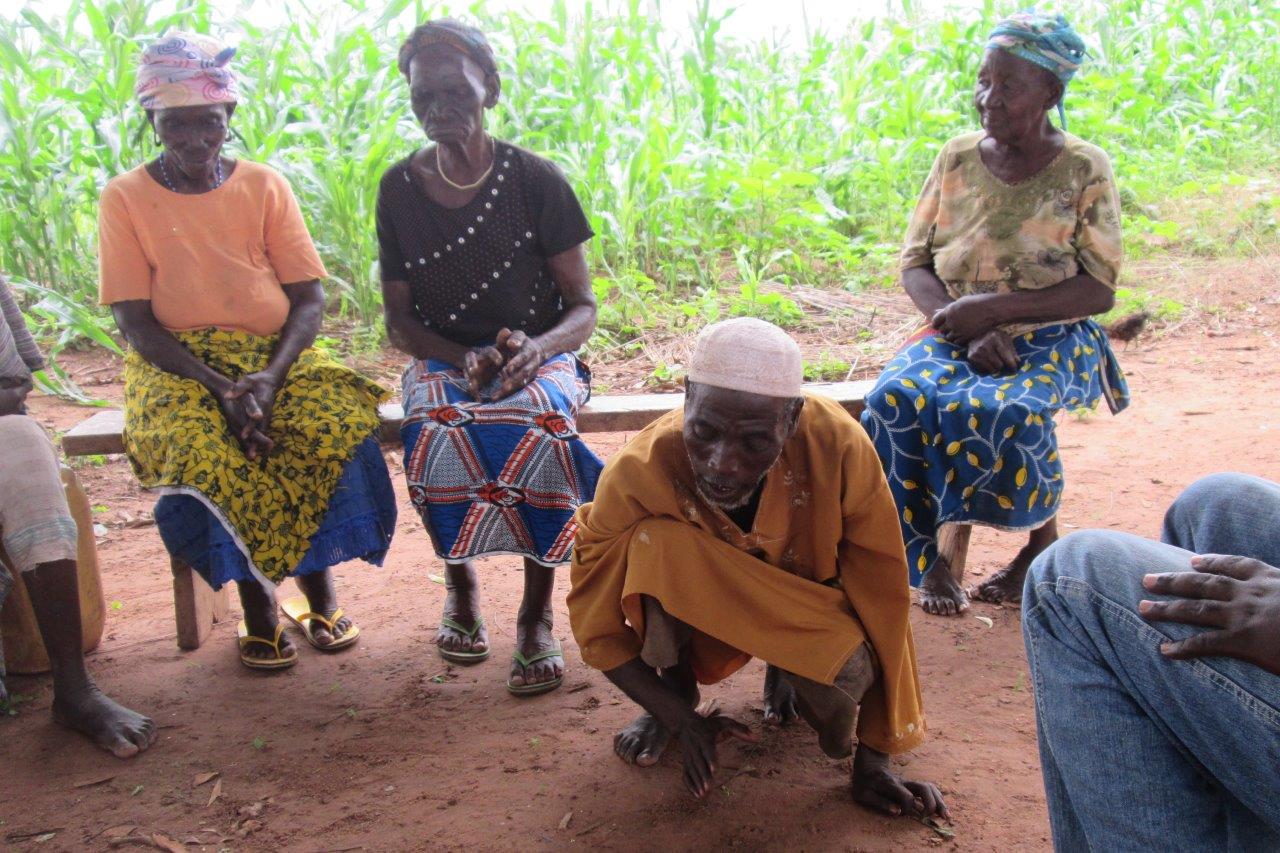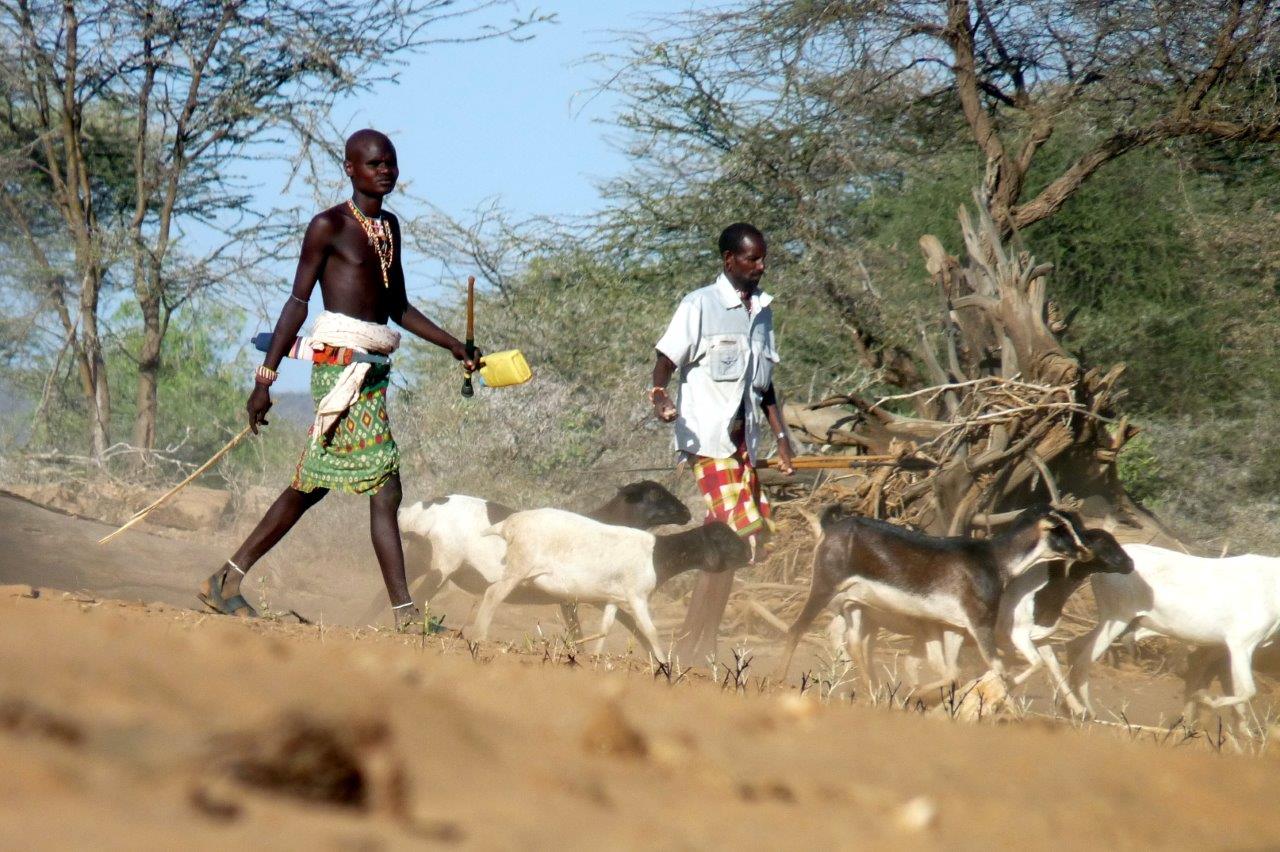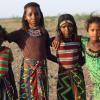Jump to: Contact | News stories | Outputs

ASSAR’s overall concern was to generate knowledge that can support adaptation for the poorer and often politically-marginalised people facing livelihood and wellbeing stresses in semi-arid regions. To this end, ASSAR’s primary research question and research framework placed high emphasis on understanding the barriers and enablers to adaptation in this context.
We were by no means the first project to try to understand how different factors constrain or promote the chances of achieving success in adaptation initiatives and actions. However, one thing we did do distinctively is explicitly frame our view of barriers and enablers in a normative sense – that is, in relation to explicit goals of how adaptation should proceed. We were not just interested in what makes any form of adaptation work; we were interested in what encourages or prevents effective, widespread and sustained adaptation that aligns with the aspirations of local communities.
The attention to barriers and enablers in this sense was imbued in all of the strands of our work (governance, social differentiation, ecosystem services, gender and knowledge systems). This helped to define not just what we studied and how, but how we approached the challenges of working with stakeholders, encouraging more participatory and transformative modes of engagement. Research on barriers and enablers was therefore an overarching rather than specific theme in ASSAR. Nevertheless, by comparing the insights drawn from our empirical cases with the existing body of literature on barriers and enablers, we think it is important to highlight two key points:

First, many discussions of barriers and enablers in adaptation focus on matters relating to finance, technology, skills, institutional capacity, and governance. But from our people-centred work in ASSAR we emphasise a strong, and in some case central role, that cultural factors may play in shaping development, uptake, and effectiveness of adaptation actions. By culture we refer to shared traits such as worldviews, values, norms, taboos, behaviours, and tastes that are often institutionalised within cultural structures related, for example, to social status, caste and gender. The importance of recognising cultural dynamics in this context is key, especially in semi-arid regions where deep-rooted traditions tend now to be confronted by rapid environmental and social change.
Second, we draw attention not just to the existence of multiple forms of barriers and enablers, but to their interaction in shaping adaptation outcomes. Just as different forms of enablers could combine to increase the chances of progress, so multiple interacting barriers can be mutually reinforcing to severely constrain progress. Equally, different factors can, in effect, counteract one another, with some acting to strengthen while others act to undermine the uptake and success of adaptation actions. Furthermore, barriers can be dynamic and change over time, with barriers in one adaptation context morphing into enablers at certain times or in certain situations. These interactions can often be highly complex and context-specific; but attempts to understand how a web of interacting factors is likely to play out in terms of shaping the conditions for successful development, uptake and effectiveness of adaptation actions is a key consideration for all those promoting effective adaptation.
Contact
|
Roger Few (R.Few@uea.ac.uk), University of East Anglia |
Related news stories
Related outputs
|
Type |
Author(s) |
Year |
Title |
Details |
Links |
|---|---|---|---|---|---|
| Book chapter | Bendapudi, R., Kumbhar, N., Gaikwad, P. and Lobo, C. | 2019 | Agro-met services and farmer responsiveness to advisories: Implications for climate-smart agriculture. | In: W. L. Filho (ed.) Handbook of climate change resilience. Cham: Springer. | Poster |
| Book chapter | Davies, J., Spear, D., Chappel, A., Joshi, N., Togarepi, C. and Kunamwene, I. | 2018 | Considering religion and tradition in climate smart agriculture: Insights from Namibia. | In: T. Rosenstock, A. Nowak and E. Girvetz (eds.) The Climate-Smart Agriculture Papers. Cham: Springer, pp. 187-197. | Summary |
| Book chapter | Shaibu, M. T., Alhassan, S. I., Avornyo, F. K., Lawson, E. T., Mensah, A. and Gordon, C. | 2019 | Perceptions and determinants of the adoption of indigenous strategies for adaptation to climate change: Evidence from smallholder livestock farmers in north-west Ghana. | In: J. K. Kuwornu (ed.) Climate Change and Sub-Saharan Africa: The vulnerability and adaptation of food supply chain factors. Vernon Press, pp. 229-249. | |
| Information brief | ASSAR | 2016 | Barriers and enablers of climate change adaptation in semi-arid Ghana. | ||
| Information brief | Bosworth, B., Hegga, S. and Ziervogel, G. | 2018 | When participation is not enough: Lessons from decentralised water governance in Namibia. | ||
| Information brief | CARIAA | 2018 | Climate adaptation policy. | ||
| Information brief | Davies, J. | 2017 | Barriers and enablers to climate change adaptation in north-central Namibia. | ||
| Information brief | Few, R. | 2017 | Drought does not work alone. | ||
| Information brief | Few, R., Singh, C., Spear, D., Davies, J., Tebboth, M. G. L., Sidibe, A, Mensah, A. and Thompson-Hall, M. | 2018 | When adaptation barriers and enablers intersect: Key considerations for adaptation planning drawn from ASSAR’s findings. | ||
| Information brief | Singh, C., Michael, K. and Bazaz, A. | 2017 | Barriers and enablers to climate adaptation: Evidence from rural and urban India. | ||
| Journal article | Ahmed, A., Lawson, E. T., Mensah, A., Gordon, C. and Padgham, J. | 2016 | Adaptation to climate change or non-climatic stressors in semi-arid regions? Evidence of gender differentiation in three agrarian districts of Ghana. | Environmental Development, 20: 45-58. | Summary |
| Journal article | Deshpande, T., Michael, K. and Bhaskara, K. | 2018 | Barriers and enablers of local adaptive measures: A case study of Bengaluru’s informal settlement dwellers. | Local Environment, DOI: 10.1080/13549839.2018.1555578. | Information brief |
| Journal article | Few, R. and Tebboth, M. G. L. | 2018 | Recognising the dynamics that surround drought impacts. | Journal of Arid Environments, 157: 113-115. | Summary; Information brief |
| Journal article | Gajjar, S. P., Singh, C. and Deshpande, T. | 2018 | Tracing back to move ahead: A review of development pathways that constrain adaptation features. | Climate and Development. | Summary |
| Journal article | Mugari, E., Masundire, H., Bolaane, M. and New, M. | 2018 | Perceptions of ecosystem services provision performance in the face of climate change among communities in Bobirwa sub-district, Botswana. | International Journal of Climate Change Strategies and Management. | Presentation |
| Journal article | Ofoegbu, C., New, M. G. and Kibet, S. | 2018 | The effect of inter-organisational collaboration networks on climate knowledge flows and communication to pastoralists in Kenya. | Sustainability, 10(11): 4180. | |
| Journal article | Ofoegbu, C., New, M., Nyamwanza, A. M. and Spear, D. | 2018 | Understanding the current state of collaboration in the production and dissemination of adaptation knowledge in Namibia. | Environment, Development and Sustainability. | |
| Journal article | Sidibé, A., Totin, E., Thompson-Hall, M., Traoré, O. T., Traoré, P. C. S. and Olabisi, L. S. | 2018 | Multi-scale governance in agriculture systems: Interplay between national and local institutions around the production dimension of food security in Mali. | NJAS - Wageningen Journal of Life Sciences, 84: 94-102. | Summary; English information brief; French information brief |
| Journal article | Singh, C., Daron, J., Bazaz, A., Ziervogel, G., Spear, D., Krishnaswamy, J., Zaroug, M. and Kituyi, E. | 2018 | The utility of weather and climate information for adaptation decision-making: Current uses and future prospects in Africa and India. | Climate and Development, 10(5): 389-405. | Summary; Video |
| Journal article | Singh, C., Rahman, A., Srinivas, A. and Bazaz, A. | 2018 | Risks and responses in rural India: Implications for local climate change adaptation action. | Climate Risk Management, 21: 52-68. | Summary; Information brief |
| Journal article | Solomon, D. S. and Rao, N. | 2018 | Wells and wellbeing in South India. | Economic & Political Weekly, 53(17). | Infographic; Information brief |
| Journal article | Spear, D. and Chappel, A. | 2018 | Livelihoods on the edge without a safety net: The case of smallholder crop farming in north-central Namibia. | Land, 7(3): 79. | Summary |
| Journal article | Davies, J., Spear, D., Ziervogel, G., Hegga, S., Angula, M., Kunamwene, I. and Togarepi, C. | 2019 | Avenues of understanding: Mapping the intersecting barriers to adaptation in Namibia. | Poster, Information brief | |
| Publication in progress | Degefu, M. A., Assen, M., Few, R. and Tebboth, M. G. L. | _ | Perceptions of local people on impacts and management of Prosopis juliflora in arid/semi-arid regions of the Middle Awash Valley, Ethiopia. | Poster | |
| Publication in progress | Few, R., Singh, C., Spear, D., Tebboth, M., Davies, J., Thompson-Hall, M. and Muhvich, K. | _ | The role of culture as a barrier and enabler to adaptation in semi-arid lands. | ||
| Publication in progress | Gitonga, Z. and Visser, M. | _ | Evaluating access, use and impact of climate information on welfare and use of adaptive strategies by rural families in arid regions of northern Namibia. | ||
| Publication in progress | Kaur, H., Bazaz, A. and Srinivas, A. | _ | Understanding access to knowledge systems and rural perspectives from Karnataka. | ||
| Publication in progress | Ofoegbu, C. and New, M. | _ | The effect of inter-organisational collaboration networks on climate knowledge flows and communication to rural farmers in Ghana. | ||
| Publication in progress | Pillai, S. and Bendapudi, R. | _ | Inclusion of local aspirations in village development plans in Maharashtra. | ||
| Publication in progress | Satyal, P., Budds, J., Few, R., Bahir, A., Kibet, S. | _ | Adaptation to climate change in the context of decentralisation: Exploring multi-level governance of water-related issues in semi-arid areas of East Africa. | Presentation | |
| Publication in progress | Shaibu, M. T., Onumah, E. E. and Al-Hassan, R. M. | _ | A comparative analysis of levels and intensity of adoption of climate change adaptation strategies among livestock farmers in North-West Ghana. | ||
| Journal article | Singh, C., Solomon, D., Bendapudi, R., Kuchimanchi, B., Iyer, S. and Bazaz, A. | 2019 | What shapes vulnerability and risk management in semi-arid India? Moving towards an agenda of sustainable adaptation. | Summary | |
| Publication in progress | Sinha, B. and Bendapudi, R. | _ | Identifying differential vulnerabilities of rural communities in semi-arid region of Maharashtra through a wellbeing approach. | Poster | |
| Publication in progress | Totin, E., Sidibe, A. and Thompson-Hall, M. | _ | Governance of resources: Is there space for implementing the land policy under complex customary tenure practices? | Presentation | |
| Report | Singh, C., Basu, R. and Srinivas, A. | 2016 | Livelihood vulnerability and adaptation in Kolar District, Karnataka, India: Mapping risks and responses. | ||
| Thesis | Abass, R. | 2018 | Formal and informal institutions in climate change adaptation: the case of Lawra and Nandom districts in the upper west region. | Master's thesis. University of Ghana. | Poster |
| Thesis | Akugre, F.A. | 2017 | Implications of land tenure rights on farmers’ adaptive capacity to climate variability and change in semi-arid North-Western Ghana: The case of crop farmers in the Lawra district. | Master's thesis. University of Ghana. | |
| Thesis | Chappel, A. | 2018 | Barriers and enablers to the adoption of practices to improve crop production and reduce vulnerability to climate risks in the semi-arid Omusati Region, Namibia. | Master's thesis. University of Cape Town. | Poster |
| Thesis | Davies, J. | 2016 | Exploring the factors and actors that contribute to the co-production of climate adaptation plans: A comparison of three municipalities in the Western Cape Province, South Africa. | Master's thesis. University of Cape Town. | |
| Thesis | Gitonga, Z. | _ | Leveraging climate information, improved adaptive technology and migration to build resilience and reduce vulnerability of rural communities to climate risks in arid and semi-arid lands. | PhD thesis. University of Cape Town. | |
| Thesis | Kaba-Ayamba, O. | _ | The influence of adaptation intervention from ecosystem services and wellbeing: A comparative study in the Lawra and Nandom districts of Upper West Ghana. | PhD thesis. University of Ghana. | |
| Thesis | Lente, I. | 2017 | Poster | ||
| Thesis | Mosime, B. | 2018 | The use of traditional weather forecasting by agro-pastoralists of different social groups in Bobirwa sub-district, Botswana. | Master's thesis. University of Cape Town. | |
| Thesis | Selato, J. C. | 2017 | Credibility and scale as barriers to uptake and use of seasonal climate forecasts in Bobirwa Sub-District, Botswana. | Master's thesis. University of Cape Town. | Presentation |
| Thesis | Shaibu, M. T. | 2016 | Climate change adaptation strategies of small livestock farmers of Nandom and Lawra. | Master's thesis. University of Ghana. | Poster |
| Thesis | Shooya, O. | 2017 | Barriers and enablers to water access and community wellbeing in the Onesi constituency of Namibia: The case of Okalonga B and Onandjandja villages. | Master's thesis. University of Cape Town. | |
| Toolkit/guide | Hegde, G., Singh, C. and Kaur, H. | 2018 | Adaptation as innovation: Lessons from smallholder farmers in rainfed Karnataka. [Information Booklet] | Kannada booklet | |
| Working paper | Bendapudi, R., Yadav, A., Chemburkar, S., D’Souza, M. and Thomas, R. | 2019 | Adaptation or maladaptation: Case of farm ponds converted into storage tanks in Maharashtra: Implications for groundwater governance. | Poster | |
| Working paper | D’Souza, M., Rao, K. B., Awasthi, S., Nazareth, D. and Bendapudi, R. | 2017 | Identifying climate risks and assessing differential vulnerability of communities in Ahmednagar and Aurangabad Districts of Maharashtra. | ||
| Working paper | Degefu, M. A., Assen, M. and McGahey, D. | 2018 | Climate variability and impact in ASSAR’s East African region. | ||
| Working paper | Few, R., Bendapudi, R., Mensah, A. and Spear, D. | 2016 | Transformation in adaptation: Learning from ASSAR’s regional diagnostic studies. | ||
| Working paper | Few, R., Satyal P., Assen M., Camfield L., Leavy J. and McGahey D. | 2018 | The development-adaptation spectrum in dryland East Africa: mapping risks, responses and critical questions for social research. | ||
| Working paper | Misquitta, K. and Thatte, K. | 2018 | Whose appropriate technology? Understanding the adoption of micro-irrigation in the face of climate and policy uncertainty. | ||
| Working paper | Pradyumna, A., Bendapudi, R., Zade, D. and D’Souza, M. | 2018 | Heat stress – vulnerability, health impacts, and coping strategies in rural communities in the semi-arid region of Maharashtra, India. | ||
| Working paper | Singh, C., Gajjar, S. P. and Deshpande, T. | 2016 | Policies, projects and people: Exploring the adaptation-development spectrum in India. | ||
| Working paper | Singh, C., Urquhart, P. and Kituyi, E. | 2016 | From pilots to systems: Barriers and enablers to scaling up the use of climate information services in smallholder farming communities. | ||
| Journal article | Werners, S. E., Wise, R., Butler, J., Totin, E. and Vincent, K. | _ | Learning from adaptation pathway development: key characteristics and guiding principles. | ||
| Video | ASSAR | 2019 | Does knowledge enhance adaptive capacities in semi-arid regions? Perspectives from ASSAR's work. |



